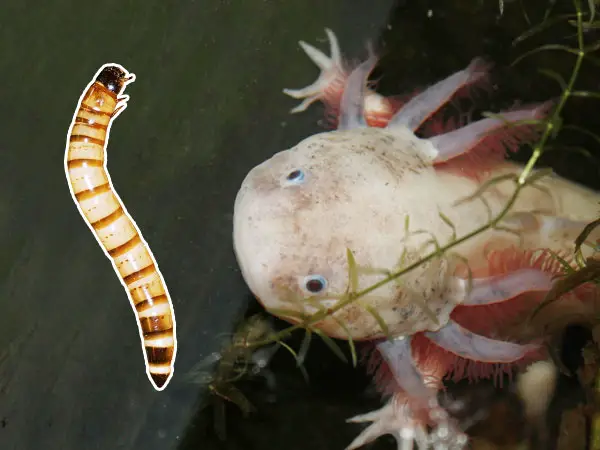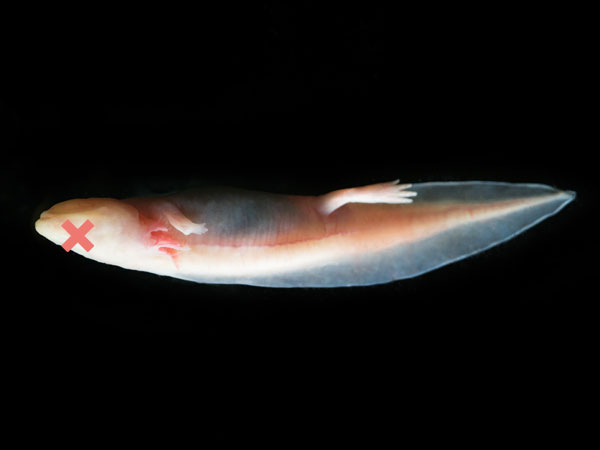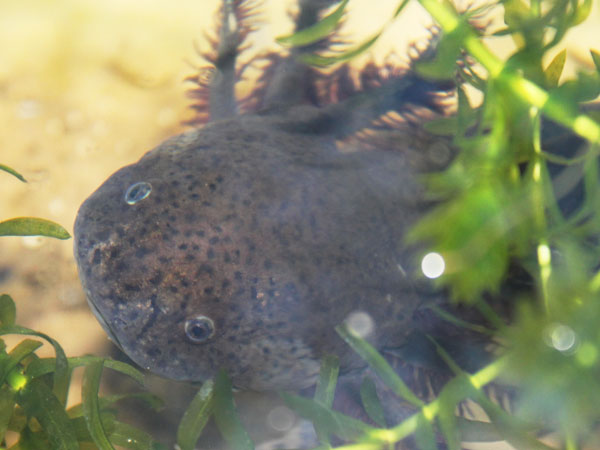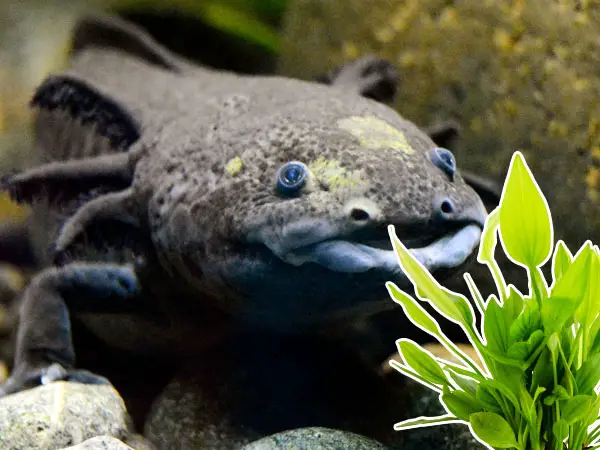Pets that consume algae as a main part of their diet do so because they are omnivores or herbivores. Axolotls are strictly carnivores, which is why algae are completely out of the question for them. What they need is a high-protein diet as their digestive system simply developed that way.
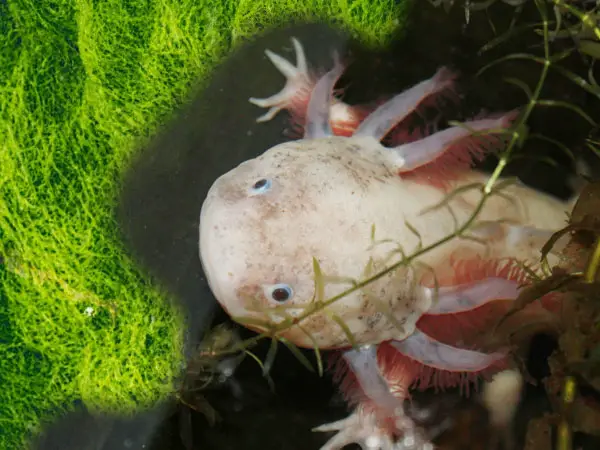
Besides protein, they need some fats too. This is especially true if you have a baby axolotl because they need it for their growth. Giving them high-fat foods every now and then can accelerate their growth a bit. There are no plants that can provide nutritional value for them either.
What Algae Eaters Can You Keep with Axolotls?
In case there is plenty of algae in your axolotl tank, adding an algae eater fish to it is not a good solution at all. They are not going to get along with those fish species and some of them might even hurt your salamander.
For example, the protective spines of a catfish can easily hurt your axolotl. What characterizes them the most is their soft and fragile body. Pretty much anything with sharp edges would easily damage their skin. There is a wide range of methods that can help you get rid of algae in the aquarium.
Next up, we are going to show you how exactly to get rid of the algae that got accumulated in the tank.
How to Get Rid of Algae in Axolotl Tank?
Reducing the amount of food that you give to your axolotl is a big one. You need to monitor your axolotl as he eats to find out how much food is enough. Over time, you are going to figure out the ideal portion for your salamander. By doing so, you are going to minimize the leftover foods that contaminate the water and facilitate the growth of algae.
Algae also need light for their growth. The more light there is, the faster the algae are going to grow. Check out the lighting in your tank and reduce it as much as you can. Sometimes the lights are just too strong even though your axolotl could thrive in lower lighting conditions.
Introducing some fresh water to the tank once or twice a week also helps. In clean water, there is really nothing from which the algae can develop. Not to mention that your axolotl is going to be happy about it as well.
Filters can solve the problem pretty much the same way. In that case, instead of pouring in fresh water, the filter makes the polluted water as clean as possible. The bigger and more powerful the filter, the better it is going to be at keeping away algae.
The simplest solution is really to do some hands-on cleaning and remove the algae manually. And at last but not least, you can also use some fast growing aquatic plants. These will do a great job at keeping the aquarium water clean as natural filters
Can You Use Flourish Excel to Eliminate Algae?
Flourish Excel is basically liquid carbon and it can help you remove the algae from your tank. But is it worth it? Well, it turns out that Flourish Excel is one of the most expensive products when it comes to cleaning up algae.
Therefore, it only depends on your wallet. There is a wide range of other options when it comes to getting rid of algae. If the cost doesn’t bother you and you feel like you don’t have time to deal with the algae, then you should definitely buy it.
Just to give you some tips on how to use it, we are going to take a 60-gallon tank as an example. With this product, it is better to start small. On day one, add 5ml of Flourish Excel to the tank. Then, gradually increase the dosage until you pour in the final 15ml on day 15.
This should give you an idea about how to use it in tanks of different sizes. Either way, make sure to read the description. This product will really help your plants grow while the algae should die off by day 12. As long as you are not overdosing it, Flourish Excel will solve all of your algae problems.
Is Blue Green Algae Bad for Axolotl?
Blue green algae are plain harmful and should be removed from the aquarium as soon as possible. This type of algae is not good for any aquarium pet. It is, in fact, cyanobacteria which produces harmful chemicals that would only cause health problems to your axolotl.
Blue green algae won’t do any good to the environment in your tank either. Your salamander needs well-oxygenated water and what this algae does is it consumes oxygen. It causes the oxygen level in the tank to become lower and lower to the point when it becomes unhealthy for your pet.
With this type of algae, you need to remove it manually as soon as you notice it. Make sure to thoroughly clean the tank then refill it with clean water and put the axolotl back in.
Wrapping Up
We can conclude that algae can’t really fit into an axolotl diet. If you see algae in your aquarium, then you shouldn’t wait for your pet to clean it up by eating it. Even if your salamander would eat some, it would be pretty bad for his digestion while providing zero nutritional value.
Not to mention that there are algae that are particularly harmful. One of them is the blue green algae which contains harmful chemicals and lowers the water’s oxygen level. You need to respect the fact that your axolotl is strictly carnivorous, meaning that it should eat meat-based foods all the time.
You can buy plenty of these foods in any of the local pet shops. It might seem straightforward that if plants contain a lot of fiber and vitamins, it is probably beneficial for any animal to eat. Unfortunately, this is not the case because carnivores are developed in a way so that they can derive nutrition only from meat-based foods.

